Air ionizer for apartments and houses: purpose and principle of operation + five popular models
Negatively charged ions were called electric vitamins by the Russian scientist A.L. Chizhevsky at the beginning of the last century. According to his research, such particles are no less beneficial for the body than the usual vitamins A, B, and C.
Let’s take a closer look at what an air ionizer for an apartment or home is and what it is needed for. We will also pay attention to its main advantages and disadvantages, consider the selection criteria and the TOP 5 best offers on the market.
The content of the article:
Main characteristics of the ionizer
Back in 1967, the first industrial devices appeared that were capable of saturating gases and liquids with negative groups of atoms. Later, an air ionizer was developed, which today can be freely purchased and installed in any room. To learn more about the dangers and benefits of ionized air, please go to this link.
If you do not yet know what a home air ionizer is and how to choose it correctly, we suggest studying this issue in detail, starting with the design of the device.
How does the device work and work?
Depending on the principle of operation and internal structure, air ionizers are divided into two large groups.Some work from ionizing radiation (ultraviolet, radioactive isotopes), others use high voltage with corona discharge.
If we are talking about a device for use in domestic conditions, then we mean a representative from the second group. The device produces fairly powerful electrical discharges, similar to lightning.
All designs for air ionization, regardless of the model, work approximately the same. They create free electrons that are sent into the surrounding space, where they bind with oxygen molecules.
The result of this interaction is the appearance of negative ions.
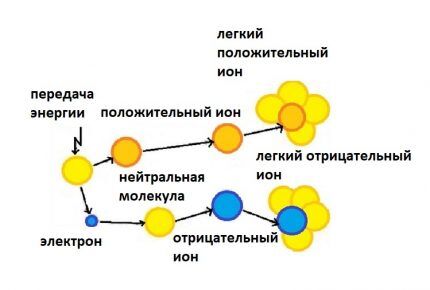
Electric current is involved in the formation of these ions, so the devices are equipped with high voltage current sources. The purpose of the sources is to supply a discharge or maintain a constant current in the elements that create the electric current.
Let's take a closer look at how this happens inside the device. Corona discharge is formed on the electrodes; they are the main structural element of the product.
Electrodes There are wire and needle ionizers. The latter act faster and more efficiently. Structurally, they are placed on one rail in a “comb” type.
In addition to electrodes, the devices are equipped with:
- Straightener with filter — the voltage supplied to the electrodes can be alternating or constant; in the first case, it is equalized.
- Diode or ion control system — provides the creation and maintenance of voltage and current.
- Protective devices — automation, safety mechanisms of the ionizer itself and various elements that ensure human safety when using the products.
In order for ions to spread throughout the room, devices are built into blowers. They can be internal and external.
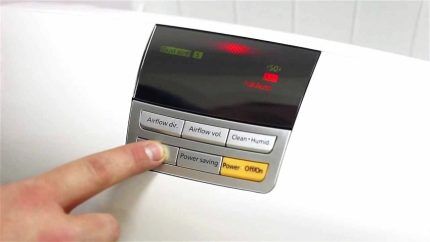
The devices are additionally equipped with LED or ultraviolet lamps. We talked more about UV lamps for home use in this article.
If there is a cleaning option, filters are included in the design. But such devices are more often called purifiers with an ionization function.
Photocatalytic, mesh, carbon, and HEPA elements are used as filters. Some devices are equipped with a multi-stage system using several types of filters.
Scope of application of ionizers
What else are air ionizers needed for besides use in everyday life and medical institutions? Such devices are built into copying equipment and provide contactless charging of photo rolls.

Mini-devices that can release charged particles are also found in keyboards, hair dryers, and humidifiers. Sometimes they also perform an antistatic function.
Pros and cons of using
If we compare the concentration of negatively charged ions between places with the best climate (mountains, sea coast, forest) and the urban environment, the number of particles in the former will be 10-15 times higher.Indoors, imbalance is caused by electrical appliances that produce positively charged atoms.
So is an air ionizer useful or harmful? There is no definitive answer. There are convincing scientific studies, but there is also an opinion about the placebo effect from the use of such devices.
The benefits of use include:
- air saturation with ions in quantities close to the parameters on sea coasts, in coniferous forests, and mountainous areas;
- beneficial effect on the body — immunity and performance increase, well-being improves, metabolism normalizes;
- neutralization of the negative impact of electrical appliances — TVs, computers;
- elimination of unpleasant odors;
- increasing the effectiveness of therapy in the treatment of diseases of the respiratory system - pneumonia, asthma, bronchitis.
Air ionizers have been working in sanatoriums and hospitals for many years. Experiments prove a beneficial preventive effect on the human body and an effect in the treatment of diseases.
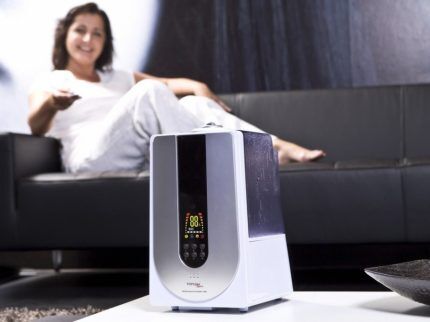
But before using the device, you must carefully study the manufacturer’s recommendations regarding proper operation. Otherwise, the released atoms will be harmful.
The main disadvantages of ionizers:
- Solid particles from the air (dust, smoke, bacteria, pollen) are attracted to the positive electrodes and settle on them. Such objects include walls, floors, and furniture, which require frequent additional wet cleaning.
- The appearance of a high level of static electricity, when different surfaces begin to “shock”.The effect occurs with prolonged and frequent use of the device.
- If the room is too dusty, a person inhales dust along with ions, which is harmful to health.
- You cannot smoke when the ionizer is on - tar accumulates in the throat and can trigger an inflammatory process in the form of pharyngitis, laryngitis or other pathologies.
- You should not use an ionizer during an acute period of illness with a high temperature - the operation of this device can aggravate the condition.
Based on the pros and cons of the ionizer, it is impossible to say unambiguously what effect will be from its use. It depends on the individual characteristics of a particular person.
You should not install the device in rooms where children under one year old, asthmatics with acute attacks, or patients with rheumatoid arthritis live.
Asthmatics and allergy sufferers need clean air like no other. Therefore, a household air purifier is more suitable for them than an ionizer. We recommend that you familiarize yourself with the selection criteria air purifier for apartments for allergy sufferers.
Criteria for choosing technology
After analyzing all the pros and cons, the question arises - how to choose an ionizer? Living spaces are usually filled with soft materials and may contain animal hair, so high-quality air purification is important.
Type of air ionization device
There are two types of ionizers - unipolar And bipolar. The former are able to generate exclusively negatively charged ions. They are used mainly in medical institutions, but not all the time.
Bipolar ones produce both positive and negative particles in the required ratio. With their help, the effect of “mountain air” is achieved.

Main technical parameters
Essential indicators when choosing an ionizer are power, performance, and area covered. So, the higher the power, the more ions the device generates.
The performance of the ionizer is expressed in the concentration of air ions within a certain distance from the device. The minimum figure for positive ions is 400 pcs. per cm3, average - about 1.5-2 thousand, maximum reaches 50 thousand.
For negative ones, the minimum value is set within 600 ions, the average is 3-5 thousand, the maximum coincides with positive ones.
When choosing, you should also pay attention to the coverage area of the device, comparing it with the dimensions of the room where the ionizer will work.
If you need a device for a bedroom, bedside area in a nursery, a product with a short range of action is suitable. It is enough to provide a place to sleep with clean air.
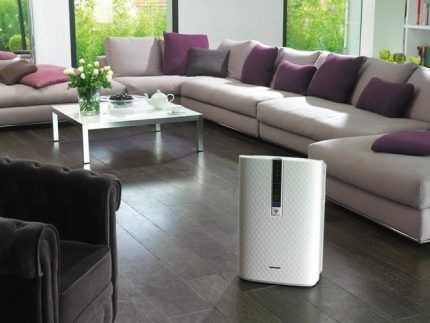
To ionize a home workplace or room where the family spends the most time, a device with average parameters is sufficient. Its coverage area is 15-25 square meters. m.
All performance indicators must be confirmed by appropriate certificates. This guarantees the safety of using the device.
Additional functionality of devices
The ionizer can be combined with other equipment: humidifier or air purifier, baby monitor. Users note the convenience of such devices.
The device can be equipped with a filter - electrostatic or HEPA. The first creates an electric field like a thunderbolt, which neutralizes the effect of heavy ions. It is enough to periodically wipe or rinse it.
The second - HEPA - filters the air with the highest quality and is considered the most effective modern purifier, but it needs to be changed regularly.
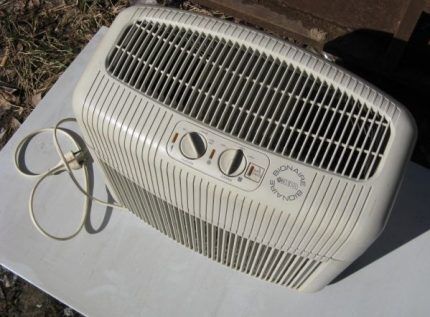
Checking functionality using simple methods
There are no problems with other equipment - you turn it on and you can immediately see whether it works or not. It is impossible to determine what the ionizer does after being plugged in and/or pressing a button: most home appliances do not make noise and do not have indicators on the panel.

You can check the functionality of the device without an air ion counter in another way. Cut a thin strip of paper, take a plastic stick, rub it on dry hair and try to lift the strip with the “electrified” end.
Then move the stick to the device’s coverage area and again try to lift the strip. If this does not happen, the charge is neutralized and everything works. Such checks can be used not only immediately after purchasing the ionizer, but also if it falls on the floor.
TOP 5 best offers on the market
The rating includes devices from Russian and foreign brands that are optimal in price and quality. The cost of devices varies from 1.7 to 10 thousand rubles. and depends on the set of functions and the country of origin.
Place #1 – Milldom M900 Premium
The device was designed and manufactured in Russia, but from Japanese components. This ozonizer-ionizer is the most productive analogue on the market.
The device is capable of serving large areas, which is beneficial for owners of large residential and commercial premises. Milldom M900 Premium can also be used as an ozonizer for water, food, and interior items.
Characteristics:
- Power (W) - 10.
- Overall dimensions (mm) - 268x188x69.5.
- Serviced volume (m2) — 160.
- Weight (kg) - 0.94.
- Power - network.
The device is equipped with a timer for 5-30 minutes, the time until shutdown is displayed on the front panel. You can give commands to the ionizer through sensors.
The compact device does not take up much space and is convenient for transportation when traveling. The ionizer resource is designed for 17 years of service.
Location #2 – Yantar-5M
This needle ionizer was manufactured at the Yantar Research and Production Company, which is located in Kazan. Since 1996, the company has been producing devices, delivering to Europe, the USA, and fulfilling government orders from Russian enterprises.
The device can operate in three modes and can be configured individually. The control unit is the ATMEL microprocessor, which ensures stability and accuracy of operation.
Characteristics:
- Power (W) - 3.
- Overall dimensions (mm) - 170x100x125.
- Serviced volume (m2) - up to 20.
- Weight (kg) - 1.2.
- Power - network.
The device is made in an interesting design from environmentally friendly materials - aluminum and solid pine. The housing does not emit harmful substances and is not electrified.
If a bipolar ionizer is used in a home office, it must be installed at a distance of 2-3 m from the workplace. One device compensates for aeroion deficiency over an area of 15-20 square meters. m.
Place #3 - AIC XJ-2100
The device was manufactured by the Italian company AIC, which has several design and engineering laboratories. The brand's products undergo a 4-stage level of control, and therefore receive good reviews from consumers for their reliability.
The ionizer is equipped with a fan. The device can be installed in a car; the necessary batteries and adhesive strips are included.
Characteristics:
- Power (W) - 8.
- Overall dimensions (mm) - 350x220x126.
- Serviced volume (m2) — 25.
- Weight (kg) - 1.4.
- Power supply is from the mains and cigarette lighter.
The AIC XJ-2100 model can operate in two modes. At a high power level it ionizes the air continuously, at a low power level it turns on for a minute and takes a break for 3 minutes.
The device is equipped with a removable block with metal plates that are easy to care for. They need to be wiped periodically to remove accumulated dust.
Place #4 - AirTec XJ-110
The device is made in Taiwan. The brand's climate control equipment belongs to the budget class and is multifunctional.
The vertical body of the miniature device has only one removable element - the battery compartment. The operating status of the device can be determined by the LED indicator on the front panel.
Characteristics:
- Power (W) - 1.2.
- Overall dimensions (mm) - 132x73x140.
- Serviced volume (m2) — 15.
- Weight (kg) - 0.28.
- Food – 6 (type “D”, 4 pcs.).
The device can be used in residential and office premises; it can be installed in cabinets, refrigerators, and car interiors. It operates almost silently and consumes little energy.
In addition to air ionization, AirTec XJ-110 can attract dust, destroy unpleasant odors, and kill germs and bacteria.
It should be wiped periodically with a soft damp cloth.Increased noise during operation indicates the need for such maintenance.
Seat #5 – iBaby Air A1
The product was created by the American company iBaby Labs. The brand is known for its unique developments in the field of high-tech “parental” gadgets.
The device can analyze the air around it and independently turn on the ionization option, if necessary. Connects to Wi-Fi, the climate in the nursery is controlled via an application.
Characteristics:
- Power (W) - up to 3.
- Overall dimensions (mm) - 127x152x152.
- Serviced volume (m2) — 5.
- Weight (kg) - 0.9.
- Power supply is from the network.
This ionizer is equipped with a two-way audio system for monitoring the child, temperature and humidity sensors, and can work as a night light with a choice of lighting colors.
The iBaby Air A1 device gives parents advice on improving the air in the room, provides a graph of changes in indicators over a certain period, and an unlimited number of users can be involved in monitoring the climate condition.
In addition to the products considered, devices with similar parameters and classic Chizhevsky lamps are available for sale, but the latter are unipolar and do not meet the requirements SanPiN 2.2.4.1294-03. According to regulations, the device must produce ions of both polarities.
Tips for use
To choose the location of the device, keep in mind that dust will stick to surfaces near the device. Walls and ceilings are more difficult to clean than a table or nightstand. The best option is next to the bed or workplace.
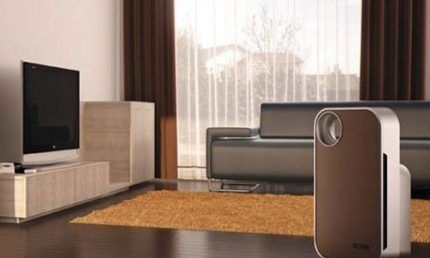
Every year it is necessary to disassemble the ionizer and clean all parts. It is best to entrust this work to service center specialists so as not to damage the mechanisms.
Conclusions and useful video on the topic
A visual demonstration of the process of air ionization.
Some information about choosing ionizers.
Interview with scientist S. G. Bolotov about air ionization.
Knowing the device, operating principle, types and models of ionizers on the market, it is easier to choose a device for your apartment or house. Whether it is needed or not - the decision is individual for everyone.
Judging by the reviews, sick people feel an improvement in their condition, healthy users do not notice any effect from using the product.
Are you thinking about buying a household ionizer, but still have doubts about the advisability of purchasing such a device? Ask your questions to our experts and other site visitors - owners of ionizers will be happy to share with you their experience of personal use of the device.




We took a super plus Turbo ionizer to the office. Quite a compact thing, even a baby can figure out the buttons. When we arrive after the weekend, because the windows are closed everywhere, the air in the room feels so musty that it’s hard to breathe. I turn it on, after a minute I can breathe easily and work easier. The only thing is that there seems to be more dust. I have to clean more often. But overall, a good thing.
Hmm, there is (now, perhaps, there was) a desire to install an ionizer, but after reading about its disadvantages, I’ll probably give up this idea. We already have an increased risk of various diseases; there is no need to increase it further unless absolutely necessary.I couldn’t even think that such devices charge not only useful particles.